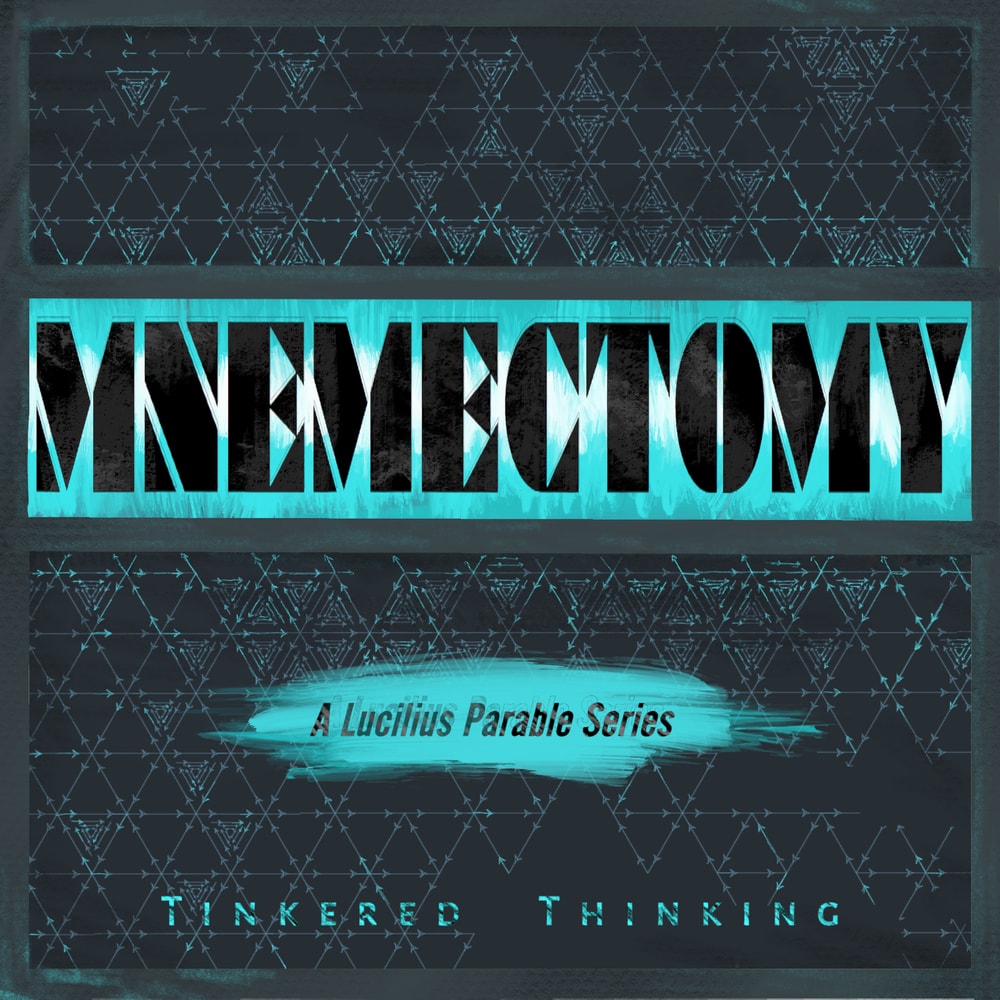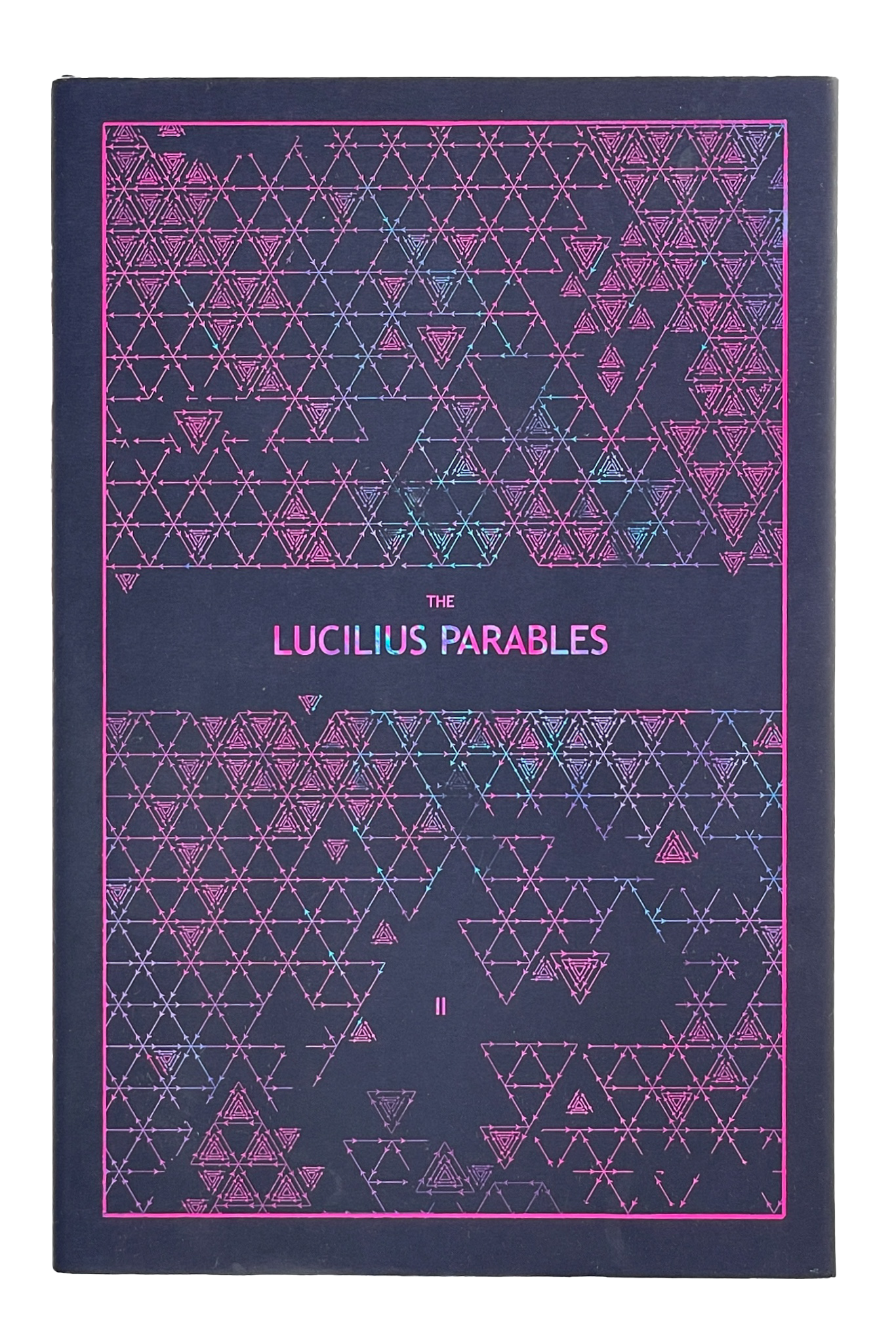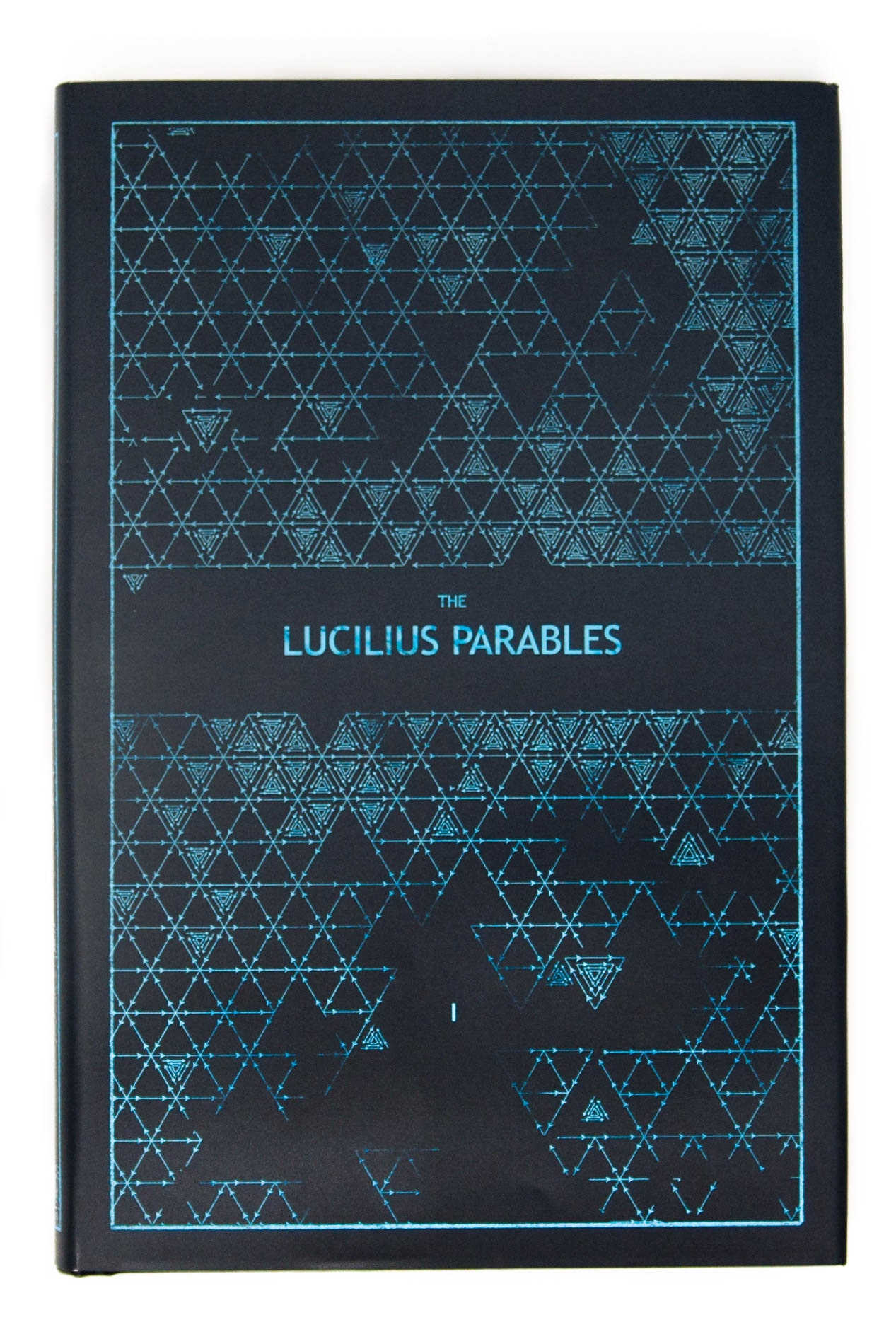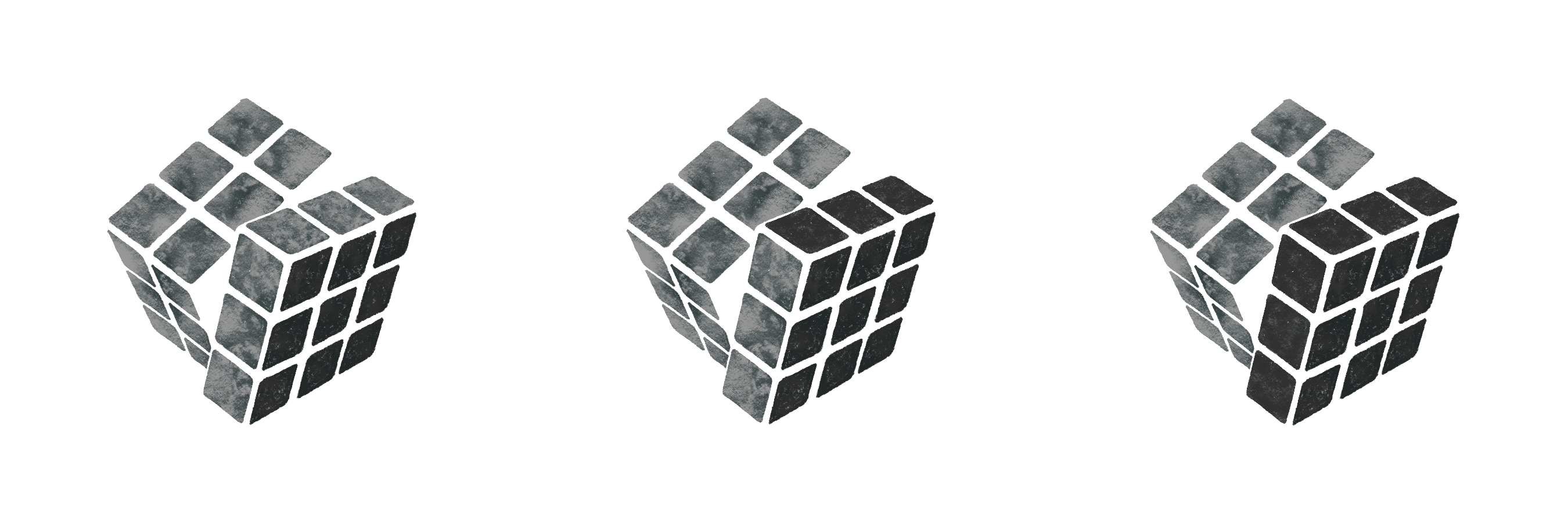Daily, snackable writings to spur changes in thinking.
Building a blueprint for a better brain by tinkering with the code.
subscribe
rss Feeds
SPIN CHESS
A Chess app from Tinkered Thinking featuring a variant of chess that bridges all skill levels!
REPAUSE
A meditation app is forthcoming. Stay Tuned.
A LUCILIUS PARABLE: ACTIVATION SEQUENCE - PART II
April 28th, 2019
Find Part I of Activation Sequence here.
The Hoverjump™ car descended from the stratosphere, overlooking a huge expanse of forest and zoomed down towards the black green world.
Lucilius had not ThoughtLinked™ with the car for nearly 6 weeks and as the car made it’s way down through low clouds, it reflected, having worried about Lucilius, on what state the man might be in. Nine months prior, the car had dropped Lucilius off for his long retreat, but barely a few days had gone by before he’d called the car back, carrying a huge selection of books that Lucilius said he needed. Then again, a week later Lucilius requested another batch of books, and then another, and each time the car visited Lucilius, the car had grown more worried as Lucilius seemed more disheveled, the tiny cabin in more of a disarray, the man himself growing thin and frenetic.
The car offered once if Lucilius wanted to abandon the experiment and go back, but it was as though Lucilius didn’t even understand the words.
Then six weeks ago, the car had come with a last batch of books, all strangely esoteric things the car had read on the way over. Things that did not seem connected, nor useful in the vein of all the other material he’d brought Lucilius over the seven or so months prior. And then radio silence. The car even went so far as to ping Lucilius’ ThoughtCode™ but it rendered offline, but it was outside the stipulations of their priy-on-tract to go beyond this action. The car was relieved when finally Lucilius’ ThoughtCode™ pinged. Still the car worried how Lucilius was doing and what would be found. All of it was made all the more worrisome when during the last visit the car discovered that Lucilius had not yet written a single word during the previous seven months and had therefore still not started the vast project Lucilius had secluded himself in order to do. The months of reading in that moment had seemed to the car like a vast procrastination. All of the books being disparate and some batches being straight-up indulgent. None of it seemed in line with who the car knew Lucilius to be, and the car in its spare time had traversed much of the recent Scientific studies of psychology and had of course read through Jung and Freud and William James and all the like, searching for a way to hope that the car’s friend Lucilius would be ok. In all that study the car could find no reason to break the stipulations of their priy-on-tract and seek external assistance on behalf of Lucilius, but nor could the car find any reason not to worry about his friend.
With all this in mind the car nearly failed to notice that it still had quantum engines firing below regulation altitude. The car switched off quantum propulsion and initiated landing sequence, taking unnecessarily high resolution scans of the cabin and surrounding forest floor. Lucilius was indeed in the cabin, alive and apparently sensing the car’s arrival. Image-tracking systems picked up Lucilius with a two-billion point confirmation as he emerged from the cabin’s front door and fed the information to higher executive systems in the car’s cognitive mainframe. The executive systems instantly reviewed the data and then cracked blinder walls within it’s own mainframe in order to double check the health of its image-tracking systems – something it had only done a handful of times during emergency maneuvers in the early days. It was indeed Lucilius from all the car could tell.
* * *
Lucilius looked up at the sky, seeing the familiar Hoverjump™ shape emerge from a low mist the forest had breathed up into the sky. Lucilius noticed the vehicle was coming in a little faster than usual, but failed to think much of it. He bent down and picked up a heavy suitcase and a backpack, and walked towards the car as it engaged it’s final landing protocols. The side door swung open and as Lucilius swung a heavy suitcase up into the car, he said,
“Hello old friend.”
“Lucilius,” the car parroted in greeting.
“Miss me?” Lucilius asked with a playful smile.
“It’s been a little while, this time,” the car gently prodded. Lucilius only offered a playful smile and raised eyebrows, as though it was meant more for himself rather than an answer to the car’s question. The car prompted gently once more,
“Fruitful?”
Lucilius paused, slowly smiling wider. Then he patted the suitcase and said, “you could say that.”
“Some writing I take it?” the car asked.
Lucilius unzipped the suitcase and swung it open. It held two huge stacks of paper.
“You wrote all that in the last six weeks?” The car wondered aloud.
The comment made Lucilius pause as he realized just how much time he’d spent out in the middle of nowhere and just how little time it had taken him to draft up the two big blocks of writing.
“You know…” Lucilius began, “I suppose one of the tragedies of being human is that it often takes so long to get to the point where you can finally get going.”
He paused.
“Then again, I suppose it takes a little while to understand why you’re going in the first place. But, I don’t know, that might be an excuse.”
The car made an interested sound.
“I suppose I can relate.”
Lucilius smiled. “I suppose so.”
“Well, Shall we?”
“Definitely,” Lucilius said.
“Where to?” the car asked.
“Let’s just get get rolling. . .
We’ll figure it out on the way.”
DOMAIN SKEW
April 27th, 2019
If all you have is a hammer, than everything starts to look like a nail.
This captures domain skew simply in a single sentence, but at the same time, it phrases domain skew in a way that does not promote healthy introspection. It’s a bit like a cartoon version of domain skew that hyperbolizes the concept, and this hyperbole perhaps goes too far in the sense that it leaves the realm of what we honestly and truly think might apply to ourselves. It’s somewhat easy to see other people making this mistake, but what about ourselves?
The stereotypical used car salesman fails to see the disingenuousness of his approach because he is too busy seeing every person as a potential source of money.
Likewise perhaps with the Realtor who is primed to pick up on people who are looking for a house, no matter what the social situation.
The lawyer might see the world through a matrix of restraints
While the entrepreneur may see the world as a malleable ball of clay.
The priest most likely sees everything as an unfolding of some deity’s plan,
while the scientist may see everything as a curious puzzle that can be fruitfully observed and studied.
Regardless of profession, each person is imbued with a similar skew, as per the experiences we’ve had.
And while common stories like religion and nationalism may form some glue for groups of people, there is one common thread that unites all people whether they like it or not: facts.
Axiomatic principles about reality that are non-negotiable form the stage upon which all is possible and within which all such group-glue stories like religion and nationalism exist. No religion, nor nation can argue with the ever present fact of gravity. It is not a choice, just as breathing and sleeping are not choices if we wish to see tomorrow.
The domain that we have to confront, regardless of what we think about it is the one that science seeks to describe and explore, one that certainly has constraints, but which is easily focused on the infinite possibilities that can take place because of these constraints. It’s a simple fact that more is possible within the realms of science than can be described by religion and nationalism simply because these are two possibilities that have arisen within the circumstances of physical reality.
Anyone who is more concerned with some story rather than the mechanics of physical reality is bound to be surprised if that story is not in line with what is physically possible.
This is why it is good not to dive head and foot into a domain, but to have a few domains lightly within reach.
Unlike the individual who only has a hammer and sees everything as a nail,
A Jack of All Trades is equipped with all sorts of perspectives, and can therefore see the world through a variety of skews, balancing them against one another and in so doing, gaining a clearer idea of what is going on.
SUCCESSION STAGES
April 26th, 2019
Ecological succession is defined as the changes in species structure over time in a given place. Deserts can turn into grasslands given the right circumstances and grasslands can eventually lead to an even richer complex of species as we see in forests. The key to this process is that consequences of something living in a given place inevitably changes that place. For example when grasses are trimmed, as per the lunch of some herbivore, the grass also abandons some of it’s root structure in order to balance things out. Without the little green solar panel above, there’s not enough energy to run the systems of such a large root system, and so the parts of the root system that are left behind contribute to a richer soil upon which all the grass grows, and this soil, with time can grow rich enough to support larger species, like trees.
However, the desert is the fastest growing landscape on the planet. The succession process just described is occurring in reverse. That succession process is a good example of a virtuous cycle, and the process of desertification that we now have is an example of a vicious cycle. Both are very similar but one leads to a better place and one leads to a worse place.
Such a successional process may pose an apt analogy for the mind. We might think of the ideal state of a mind as one where it’s at rest with the body and primed without distraction for creating and exploring interesting ideas. Or as is often said, being in the zone. What conditions can we have an effect on in order to remove friction from our mind’s ability to slide into this zone?
Sometimes, it can feel like planting a tree in the middle of the desert and wondering why it doesn’t flourish.
What successional stages does the mind benefit from in order to flourish with the ideas that will make tomorrow better?
Could any question be more pertinent when reports of depression and anxiety are at record highs? The desertification that is occurring to our environment seems to have a twin process in the minds of the population that is suffering more and more. What first step is required to help slow the process and eventually turn the tide?
For an individual these questions are far easier to answer. While diet and exercise are jabbered about ad nauseam, both require a monolithic foundation in order to function properly: namely sleep.
To highlight the ecological allegory, sleep might be akin to the rain that nurtures the landscape. Perhaps no image is more evocative of this than the colorful super blooms that have occurred in California with the end of the drought and the return of the rains.
For the individual, everything becomes easier if sleep is dialed in, especially all the other things that a person can do in order to Level-Up their mental state:
For example just think about how much easier it would be to try and meditate after a good night’s rest, as opposed to just a few restless hours?
How much stronger does the body feel, and when results of exercise and good food and meditation are released back onto the brain, how much cleaner and smoother is our thinking?
Just as the species who live in some microenvironment change that environment, so to do our activities and our thoughts change the landscape of our brain. Lavishing that internal environment with everything it needs only makes it a better place to inhabit, and since there’s really no other choice about where and what to inhabit, it’s clear we need to nurture this space as much as possible.
This episode references Episode 370: Zen and the Goldilocks Fallacy and Episode 42: Level-Up.
TWO-DO
April 25th, 2019
An oft remarked aspect of productivity regarding to-do lists is how effective they can be when they are actually used. Of course, a to-do list that is made only in order to feel productive and not to guide next steps is simply a waste of time.
For every to-do list that has been written and eventually discarded without any of it’s listed items coming to fruition, we might ask: why do some to-do lists get done and others don’t?
The assumption might be that it’s all about the person who was supposed to do all the items on the list. Perhaps they were lazy, got distracted, or some other excuse.
But what if these discarded to-do lists have more to do with the nature of the list rather than the doer?
We might ask: is there a to-do list that is more likely to be done than another to-do list?
Approaching this question from some extremes, we can ponder the likelihood of to-do list with some god-awful number of items, say 230 against a to-do list with 5 items on it.
It’s obvious the to-do list with 5 items is more likely to get done. But if this seems perfectly acceptable with extreme juxtapositions it’s reasonable to think that similar likelihoods hold true with much lower and closer numbers.
Is a to-do list with 10 items more likely to get done than a list with 20?
The logic of the prior assumption would seem to indicate yes. But how far can this kind of trend really be pushed?
Regardless, a list of 10 or 20 items takes a few minutes to think through and write down. Minutes during which anxiety can rise as we realize just how much we have to do. Suddenly the mind is clouded with many items and intoxicated with stress.
Is this the best way to go about it? Or should we be chunking our to-do’s into even smaller pieces.
What about just two items? Literally a two- as in the number – do list.
The first item is our most pressing next action,
and the second is merely what we currently think would be a good next step after our current action.
Who knows, the world might look quite different after we’ve taken that first step.
This may even be a reason why many to-do lists are discarded before they’re ever even completed: things change as we do things, which lead to different needs and other things that need to be done.
A two-step list is also faster to think of and write down. There’s no time, nor scope for anxiety or worry to bloom and we can feel the comfort of actually getting to work on our tasks much sooner.
The obviously homophonic implications of the to-do list might actually hide a more incisive description about what needs to be done.
Simply put, don’t plan every step to the end.
Just plan two, to do,
and then,
write another to-do list.
But keep it short.
This episode references Episode 285: Plan on no Plans
INFINITE DEAD-END
April 24th, 2019
An infinite dead-end is a particularly insidious conceptual pothole that we often hit. Hours, if not days and years can be wasted trying to find something in an infinite dead-end. Perhaps the most ubiquitous example of this particular hazard is the question:
What is the meaning of life?
Possible answers to this question can ricochet in all sorts of directions and hugely elaborate frameworks have been constructed in an effort to gain some ground on this question, but to do so is somewhat like trying to stand on a black hole. Though a black hole is incredibly massive… in the same way a planet is massive, one cannot in essence stand on a black hole or build anything on it.
So to with the above question. There are infinite ways to answer this question, and yet none of these answers really make any concrete headway in the direction of solving this paradoxical question.
The best way to deal with such a question is to simply stop wasting time with such a question and concern one’s self with better questions.
Like chasing the horizon, such Infinite Dead-Ends seem to have some sort of endpoint, some sort of observable closure in the distance. As with the question: what is the meaning of life? The nefarious aspect of it’s nature is embedded in the assumption that questions have answers. However, some do not. And questions as a concept do not come complete with a good manual regarding their nature.
Infinite Dead-Ends exist in all sorts of forms. For example, we may be fiddling with some gadget that we are trying to use. Though it might appear to work for our purposes, at the end of the day it may simply just not work. We can think of a physical puzzle, like those that are fashioned from bent steel and links where the object is to separate parts - imagine for a moment a gag version of such a puzzle that intentionally has no solution, but the purpose is to prey on our desire to try and solve something.
Social Media feeds are a type of Infinite Dead-End, as are the toxic games that such inventions are based off of, namely,
slot machines.
These gambling games are tailored to play with human emotion in a way that keeps a person playing. The pattern of winning and losing is calibrated so that a person always feels as though they are on the verge of winning big, and this verge is pushed forward in time infinitely, all the while a person is steadily losing their money for the feeling of ‘almost’.
Curiosity by default points us down all sorts of paths without much of a clue about where such paths lead.
Sometimes, these paths are productive rabbit holes where a slight obsessiveness can be a good thing, allowing a mind to explore the ins and outs of a topic and gain a strong understanding.
Other times, what looks like an interesting rabbit hole is actually an Infinite Dead-End that will cost us precious time, along with any other resources we might be spending while chasing the next step in the experience, as is the case with the slot machine player who loses both time and money.
The best way to test whether or not a current object of concentration is a productive rabbit hole or if it’s an Infinite Dead-End is to pause and observe the size of progress that is being made. If the steps of progress are haphazardly sized… for example we have a breakthroughs that feels like big leaps forward along with small baby steps of progress and all manner of in between all mixed together, than this is a good thing.
If, however, the size of our steps in progress seem to be getting smaller and smaller, and the results of our effort seems to have diminishing returns, chances are good we are chasing an Infinite Dead-End.
-compressed.jpg)





